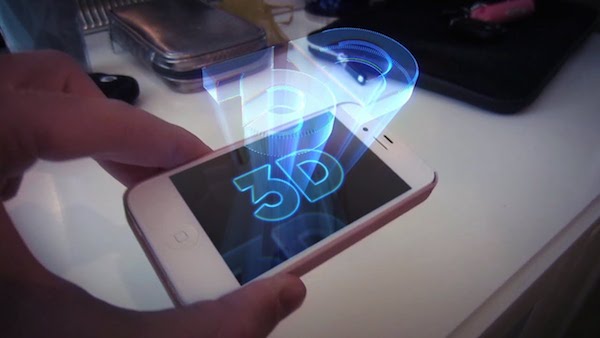Yes the concept of VR and AR is quite compelling and awe-inspiring; AR stands for Augmented Reality and VR stands for Virtual Reality – in case you were wondering. What if, you could actually interact with 3D holographic objects directly on your smartphones? Seems a little too Sci-Fi? or a tad far-fetched? Well, recent developments seem to agree with me that in the not-too-distant future, we might actually start having a 3D conversation with friends, co-workers and loved ones.
According to the United Nations specialized agency ITU (International Telecommunication Union), mobile broadband over smartphones has become the fastest growing segment of the global information and communication technology market. Mobile broadband connections over 3G networks has an annual growth rate of 40%. Almost 50% of everyone on the planet is covered by a 3G network, which refers to the 3rd generation mobile telecommunications technology used for mobile internet access.
In one sentence, a whole bunch of people have access to smartphones and steady internet access which is going to be the basis for this development.
It’s expected that smartphone usage will reach 2 billion by 2017 making it the most popular device for accessing the internet.Yet despite this amazing growth, there is a drawback – it is the limitations of using small-sized screens. Inventors are saying this is going to be a thing of the past very soon. No, they do not plan to make a super sized iPad; instead of looking at a couch on your small screen, you could project a full-sized three-dimensional hologram of it right in front of you. You could move it around, view it from any angle, and even interact with it. Projecting holograms is a complicated process especially if your trying to put it into something as small as a smartphone. This is quite different from HoloLens as there are many complicated aspects to making the HoloLens work, not to talk of the processing power required.Inventors have spent the last nine years developing virtual reality technology that miniaturizes a holographic projector into a tiny circuit chip.It is called the Quantum Photonic Imager and it can control the color, brightness and angles of light beams to display an image in the air with a resolution of 5,000 dots per inch.The highest resolution images, of course, are holograms. And because we can pack so many pixels, it’s enough to create these kinds of images,inventors expects these holographic imaging chips to be available in smartphones and other devices by the end of 2016.
This bears a lot of semblance to some of the things we already have – though not in the general market, but they do exist and we’ve seen demos. The most prominent are the HoloLens and Pranav Mistry’s invention. One thing these devices do have in common is the fact that you need to use special devices to maximize their potential – among many drawbacks as stated earlier.
This might be Sci-Fi to a lot of people; but we just might experience Minority Report; but without the gloves and super sized screens!
good information i like the 3ds